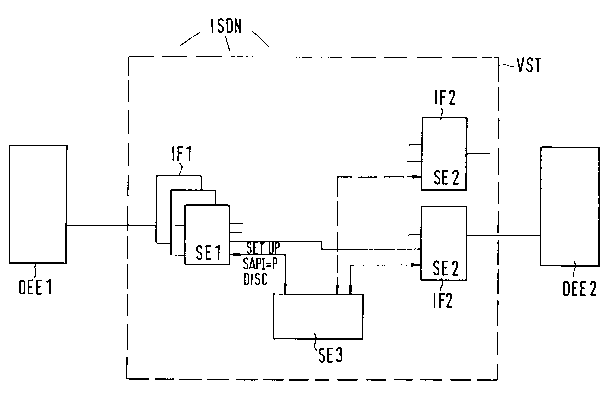Some of the information on this Web page has been provided by external sources. The Government of Canada is not responsible for the accuracy, reliability or currency of the information supplied by external sources. Users wishing to rely upon this information should consult directly with the source of the information. Content provided by external sources is not subject to official languages, privacy and accessibility requirements.
Any discrepancies in the text and image of the Claims and Abstract are due to differing posting times. Text of the Claims and Abstract are posted:
| (12) Patent: | (11) CA 2061897 |
|---|---|
| (54) English Title: | FACILITY AND METHOD FOR D CHANNEL PACKET SWITCHING |
| (54) French Title: | DISPOSITIF ET METHODE DE COMMUTATION DE PAQUETS POUR CANAL D |
| Status: | Expired and beyond the Period of Reversal |
| (51) International Patent Classification (IPC): |
|
|---|---|
| (72) Inventors : |
|
| (73) Owners : |
|
| (71) Applicants : | |
| (74) Agent: | SMART & BIGGAR LP |
| (74) Associate agent: | |
| (45) Issued: | 1996-05-28 |
| (22) Filed Date: | 1992-02-26 |
| (41) Open to Public Inspection: | 1992-08-28 |
| Examination requested: | 1995-11-08 |
| Availability of licence: | N/A |
| Dedicated to the Public: | N/A |
| (25) Language of filing: | English |
| Patent Cooperation Treaty (PCT): | No |
|---|
| (30) Application Priority Data: | ||||||
|---|---|---|---|---|---|---|
|
For packet-data switching in the ISDN D channel through
a digital exchange, the need for a costly frame handler
for processing OSI Layer 2 and 3 functions is to be
eliminated.
To do this, in response to destination information in
the SET UP message, an OSI Layer 3 control unit (SE3)
establishes a connection between the two OSI Layer 2
control units (SE1, SE2) of the exchange (VST), to
which the data terminals (DEE1, DEE2) are connectable.
Direct packet-data transfer can then take place between
the OSI Layer 2 control units without further partici-
pation of the Layer 3 control unit.
Note: Claims are shown in the official language in which they were submitted.
Note: Descriptions are shown in the official language in which they were submitted.

2024-08-01:As part of the Next Generation Patents (NGP) transition, the Canadian Patents Database (CPD) now contains a more detailed Event History, which replicates the Event Log of our new back-office solution.
Please note that "Inactive:" events refers to events no longer in use in our new back-office solution.
For a clearer understanding of the status of the application/patent presented on this page, the site Disclaimer , as well as the definitions for Patent , Event History , Maintenance Fee and Payment History should be consulted.
| Description | Date |
|---|---|
| Inactive: IPC expired | 2013-01-01 |
| Inactive: IPC from MCD | 2006-03-11 |
| Time Limit for Reversal Expired | 2004-02-26 |
| Letter Sent | 2003-02-26 |
| Grant by Issuance | 1996-05-28 |
| Request for Examination Requirements Determined Compliant | 1995-11-08 |
| All Requirements for Examination Determined Compliant | 1995-11-08 |
| Application Published (Open to Public Inspection) | 1992-08-28 |
There is no abandonment history.
The last payment was received on
Note : If the full payment has not been received on or before the date indicated, a further fee may be required which may be one of the following
Please refer to the CIPO Patent Fees web page to see all current fee amounts.
| Fee Type | Anniversary Year | Due Date | Paid Date |
|---|---|---|---|
| MF (patent, 6th anniv.) - standard | 1998-02-26 | 1998-01-23 | |
| MF (patent, 7th anniv.) - standard | 1999-02-26 | 1999-01-21 | |
| MF (patent, 8th anniv.) - standard | 2000-02-28 | 2000-01-14 | |
| MF (patent, 9th anniv.) - standard | 2001-02-26 | 2001-01-15 | |
| MF (patent, 10th anniv.) - standard | 2002-02-26 | 2002-01-18 | |
| MF (application, 2nd anniv.) - standard | 02 | 1994-02-28 |
Note: Records showing the ownership history in alphabetical order.
| Current Owners on Record |
|---|
| ALCATEL N.V. |
| Past Owners on Record |
|---|
| GERD SIEGMUND |